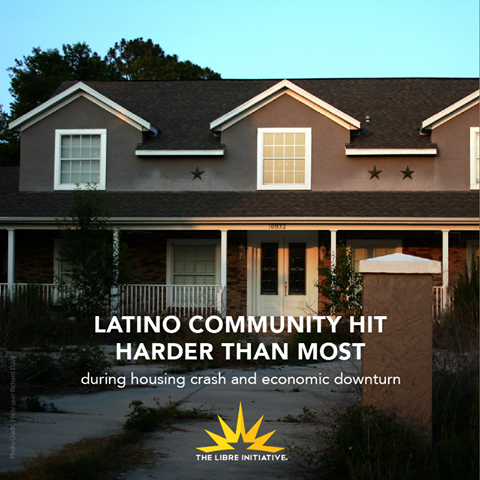Fewer Loans To Hispanics: The Unintended Consequences Of Financial Regulation

The Great Recession packed a double whammy for Hispanics. Not only was the Latino community hit harder than most during the housing crash and economic downturn, but they are more likely than whites, blacks, or Asians to associate homeownership with the American Dream. Homeownership is an important milestone for many in this country, and the availability and access to mortgage loans is an incredibly important tool for achieving it. However, Hispanics currently shopping for a mortgage may encounter greater obstacles in today’s lending market compared to just a few years ago.
The Wall Street Journal recently analyzed data on every mortgage approval reported to the federal government for home purchases in 2007 and 2014 (the most recent available). In that period, each of the ten biggest U.S. retail banks increased its share of mortgage approvals for ‘jumbo loans.’ Jumbos loans are those generally above $417,000, and are available to individuals with very high credit scores, but which require big down payments. But why are banks increasing their share of jumbo loans? It’s because jumbos have low default rates, and are usually a safe bet for banks. This point is key, because in the aftermath of the last financial crisis, government regulators mandated that banks take on less risk. And banks are complying.
Given their relative safety, it is only logical that banks would resort to more jumbo loans as a tool to achieve the regulators’ goal. But one problem emerged: a distinctive feature of these type of loans is that they predominantly go to white and Asian borrowers, according to the Journal’s analysis. In 2014, only 3 percent of the biggest banks’ jumbo borrowers were Hispanic and 1.3 percent were black. As the Journal explains, “as the 10 big banks issued proportionally more jumbos, they collectively decreased their share of all home loans to blacks and Hispanics.” Moreover, the analysis also found that the proportion of lending to those minorities fell in non-jumbo mortgages alone as well, though not by as much: among all approved mortgage applicants from the ten banks, 5.3 percent were black in 2014, down from 7.8 percent in 2007; 7.4 percent were Hispanic, down from 10.6 percent.
This situation puts banks at odds with government regulations that mandate that lenders serve a racially diverse set of customers. In fact, as lenders approve relatively more jumbo loans, major banks are giving fewer mortgages to African-Americans and Hispanics than just before the crisis. Adding to this, the 2010 Dodd-Frank Wall Street Reform and Consumer Protection Act, the landmark compendium of federal regulations affecting financial institutions and their customers, required more disclosures and tougher underwriting for mortgages. This has created greater incentives for banks to prefer jumbo loans, in part because they are not subject to the same regulatory burden and penalties as federally backed loans. Making the financial sector safer and more stable is certainly a laudable goal. While presumably government officials acted in good faith when issuing financial regulations, the data unfortunately indicates that the regulators’ goal of reducing risk has translated, in part, into troubling incentives that make offering loans to Hispanics more difficult. Such situations are not unusual in the world of policy. Regulators, just like all of us, lack the perfect economic foresight that enables them to anticipate the full range of unintended consequences caused by government action. It is this lack of perfect information – not lack of good intentions – that makes formulating good public policy so frustratingly difficult. Ironically, these unintended consequences can often end up making the problem regulators were trying to address even worse. In certain instances, like this one, they can even create new ones.

